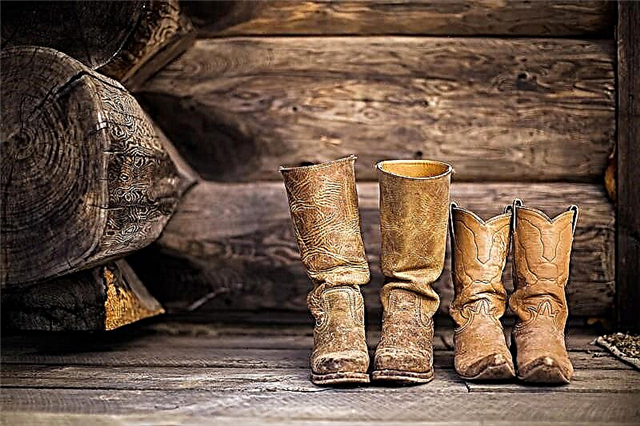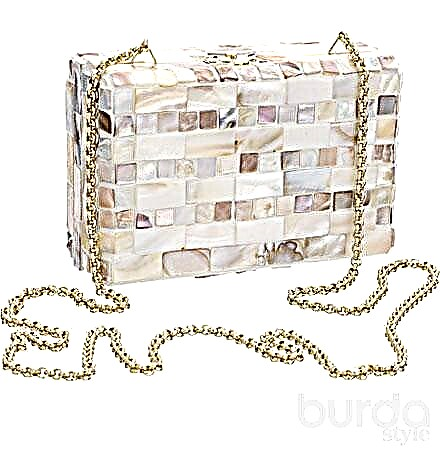It seems that the mannequin was invented more than once. If only because so today they call two different devices: one for the demonstration of clothing, the other for its creation. But let's figure it out in order ...
Start: Egypt and Rome
The mannequin was first mentioned in ancient Egyptian written sources. The world saw it firsthand thanks to archaeologists who unearthed the tomb of Tutankhamun, the last pharaoh of the 18th dynasty, who ruled Egypt until 1314 BC. e. Made of wood and painted, this prototype of the current mannequin in shape is quite similar to its modern counterpart. Historians explain: in ancient Egypt, the masters responsible for making dresses for the high dynasty did not have the right to touch the pharaoh’s body considered to be sacred. At the same time, ready-made clothes should fit him. Therefore, Egyptian tailors used a mannequin.

Egyptian tomb mannequin
Photo: original-dolls.com
The ancient Romans also had their own prototype of the current mannequin. Moreover, if the Egyptian version was used as a device for creating clothes, then the ancient Roman was a demonstration. Figures in the shape of a human body ranging in size from 8 to 25 cm were made of clay and painted. These "micromanekins" were called "figurines" and were used as a "three-dimensional picture", in miniature showing a particular style and color of clothing. It is believed that it was the figurines of a century later that led Charles Frederick Worth to the idea of using mannequins for the successful presentation of clothing models during fashion shows.

Mannequins at the Charles Frederick Worth Atelier
Photo: dressedpodcast.com
The history of fashion shows and Fashion Weeks: from private shows to grand shows
Mannequins are gaining popularity
Worth, a French couturier of English descent who worked at the end of the 19th century, undoubtedly added popularity to mannequins - with his use the use of demonstration mannequins began to develop more widely. However, historians find the first modern references to mannequins used by tailors to make clothes in France in the 18th century. In those days, the mannequin was made of wood or using papier-mâché technique, made strictly according to the individual standards of the customer or customer, and was quite expensive. The word "mannequin" arose at the same time with the subject. Translated from French, it means "idol, man" (mannequin).

Vintage mannequins for making clothes
Photo: helencraft.blogspot.com
In store windows for fashion demonstrations, mannequins began to be displayed in the middle of the XIX century. For a greater resemblance, they even began to make them out of wax - though, he could also melt such figures of sunlight and lamp light, not only losing their shape, but also staining their clothes ... There were also options for mannequins made of wood, fabric, even metal mesh. With the development of the chemical industry, mannequins for demonstrating clothes began to be made from synthetic materials - from plastic, special resin and fiberglass, and so on.

Vintage mannequins in a shop window
Photo: blog.mannequinmadness.com
The proportions and "types of figures" of mannequins changed in accordance with fashion trends, but most often they remained "faceless extras", the background for clothing items. Ralph Pucci is considered to be the man who “breathed the soul into the mannequin”. The history of the creative business of this designer and sculptor dates back to the 1970s - Pucci's career has more than thirty years of cooperation with famous stores and the best fashion designers in the world. In the "world of mannequins" he made a real revolution, starting to make these figures interesting and memorable, give them unusual poses, add amazing details.



Ralph Pucci mannequins; the designer himself at work
Photo: ralphpucci.net
Sewing machine: history of invention and evolution
Mannequins: modernity
Today, designer mannequins for demonstrating clothes can be found in store windows almost as often as simple, unremarkable figures. Modern mannequins can be static or be able to "move" the limbs, they are made whole or collapsible, performed "to their full height" or left only the torso (it happens - and only a separate part of the body).

Photo: bet-prognoz.info
Mannequins designed to create clothes look more "conservative." For them, a clear static shape and a fabric cover for sticking pins are still required. Mannequins make soft (it is more convenient to model clothes on them using the fake method, pricking the fabric) and hard (it is more convenient to carry out wet-heat treatment on this). There are sliding mannequins, the dimensions of which can be adjusted to the required measurements. The size of the fixed mannequin can be changed using the pads - each tailor chooses a method to her taste.

Photo: blog.megannielsen.com
Vintage mannequins: gallery










Photo: heliumcanewamadom.tumblr.com, collegehumor.com, creavintage.blogspot.com, pinterest.com/Misselthwaite Manor



